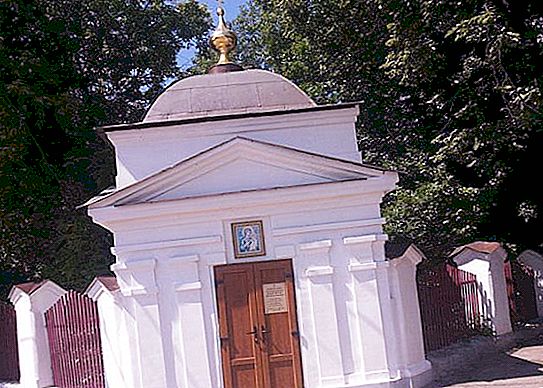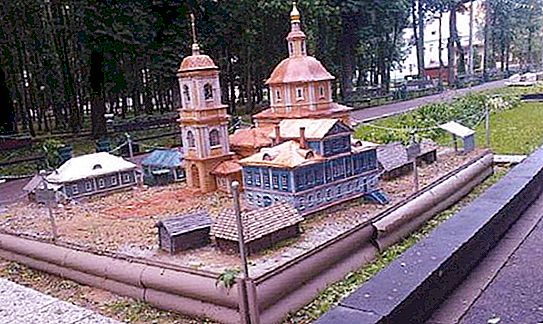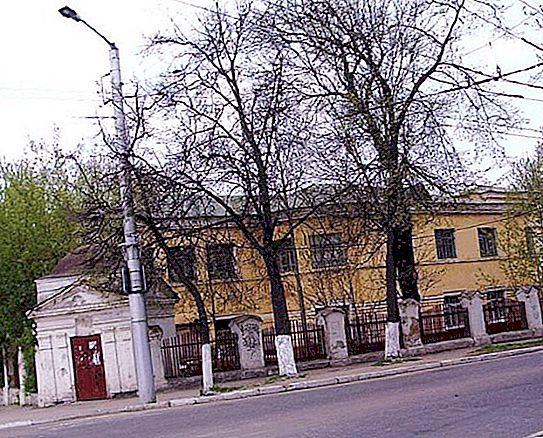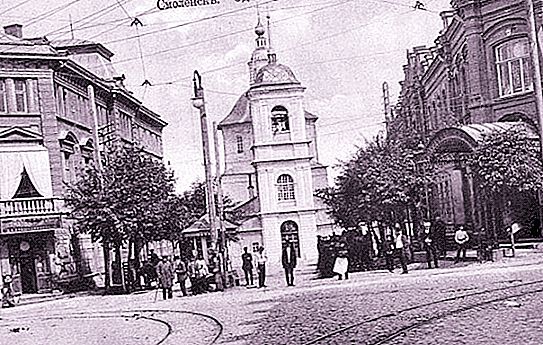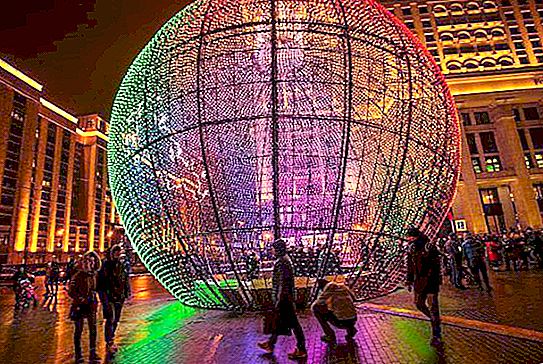In Russia, you can find many irrevocably departed attractions. One of these architectural monuments is the Odigitrievskaya Church in Smolensk, located near the Kozlovskaya Mountain. The city remembers her and her rich history. What is so remarkable about this now defunct church, our article will tell.
Appearance versions
It is believed that the very first church was built in Smolensk in 1456. Then it was a small and modest wooden building. He was erected in memory of the fact that the icon of the Mother of God of Smolensk was returned to the city. She is called Hodegetria, which means a guidebook.
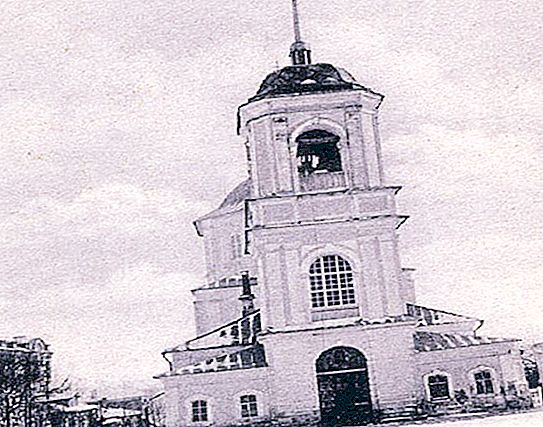
There is another version of the construction of the church. Some historians argue that the first version of the building appeared much later - in 1655. It was at a time when Smolensk freed itself from Polish occupation.
It is impossible to say exactly which version is true. But it can be safely asserted that the Odigitrievskaya (Gateway) Church at one time played the role of the main temple of the city. This was until the Assumption Cathedral was built. The state even allocated funds from the budget to maintain the church. For this, Tsar Alexei Mikhailovich appointed a salary and gave a thousand archers.
New stone church
Instead of a wooden one, in 1764 a stone Odigitrievskaya church was built. In parallel, the bell tower and chapel of John the Warriors were erected. Then the building began to represent a one-domed church in the Euro-Baroque style, to which the refectory adjoined. It is worth noting that the view from the bell tower of the Odigitrievskaya church was simply wonderful. It also differed from other Smolensk temples in its massiveness and height.
Parishioners themselves donated money for the construction of the stone building. Moreover, the historian Nikifor Murzakevich in his book indicates that the church was built by the efforts of Ensign Semyon Beshentsov, landowner Mikhail Gedeonov and their wives Anastasia and Glykeria.
First priest
In 1803, on April 16, in the Odigitrievsky church, the aforementioned Nikifor Adrianovich Murzakevich was appointed a priest. In Smolensk, he became the first historian. His wooden dwelling was located right behind the altar of the temple, but burned down in 1943 during the Great Patriotic War. This is reminded of in our time by a memorial plaque installed on a five-story building along Lenin Street in Smolensk.
Interesting and significant events in the church
Telling the history of the Hodegetria Church, it is worth mentioning the important points that took place in it in 1812.
- On July 9, townspeople met at the gates of the church of Emperor Alexander I.
- On August 5, the French launched a bomb into the windows of the building. Having exploded, she damaged inside all the decoration. Also, some ministers of the church, including Murzakevich, received minor injuries from the bomb.
- On August 6, French troops captured about fifty citizens trying to leave the city. Smolyan was locked up in church premises, but they were soon released.
- On August 20, 1812, the French wanted to remove the bells from the church, but priest Murzakiewicz stood up and did not let them go. For this he was seized and taken to his occupying municipality. However, the authorities banned from taking any action against the worshiper.
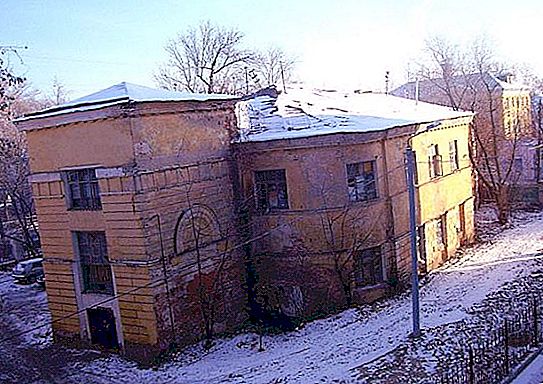
On August 30, the Hodegetria Church was attacked by Poles. They tried to plunder it and steal the property that the parishioners had piled. In the course of events, priest Murzakiewicz was beaten.
Church development
When the people recovered a little from the sad events, it was decided to take up the ennoblement of the temple. In 1822, on December 6, the Hodegetria Church of Smolensk began to possess the updated chapel of John the Warrior. By the way, L.P. Leonov painted this specially allocated part.
By the end of the nineteenth century, the church already had two thrones. One of them was the main one and was made in honor of the icon of the Mother of God Hodegetria. The second was pridelny, he was placed in the name of John the Warrior - the holy martyr. It should be said that the icon with his image was very revered in the temple. On the feast day of St. John, in May, many people came to the church to pay homage to him.
Second priest
In the nineteenth century, Roman Belyaev became the priest of the church. He was the father of Alexander Belyaev, a popular science fiction writer. Roman Petrovich studied at the Smolensk Theological Seminary and graduated from it successfully. In 1878, Belyaev began his activities as a priest. For righteous labors he was awarded a kamilavka. This high headdress of a cylindrical shape with an extension upward was awarded to Orthodox priests for special merits.
Statistical data
Interesting facts about the Hodegetria Church in the city of Smolensk can be found in pre-revolutionary publications.
- The parable consisted of a deacon, psalmist and priest, who lived in a specially designated church house.
- The church had almost two thousand square meters of land.
- At the beginning of the twentieth century, 212 parishioners attended the temple, of which 115 were women and 97 were men.
- The church had a functioning school of literacy, in which 15 students were taught. The teacher was a deacon.
- The capital of the temple at that time was 500 rubles.
- Every year on July 28, a procession to the Odigitrievskaya church from the Assumption Cathedral took place.
- A choir sang in the temple, which was considered the best in Smolensk. The church was made up of people who became graduates of the school for the blind.
The decision to close the church
In 1929, the Presidium of the Western Regional Executive Committee issued a decree on the closure of the Hodegetria Church. The fact is that it seemed to higher-ranking people that there was no need to use the temple for its intended purpose. The city community of believers in Smolensk already had 15 temples in use, and there were enough of them to satisfy cult needs. On the basis of this decree, the Hodegetria Church in Smolensk was closed on August 20 of the same year.
What was the fate of the building?
At first, the building of the closed church was ranked as a Smolensk State University. Then he was left at the disposal of the city city council. Later they planned to place a club of agricultural workers, Komsomol organizations and the House of Pioneers in the former church.
In May 1936, on May 20, the bureau of the Smolensk regional committee and the presidium of the Western regional executive committee jointly decided to destroy the Hodegetria Church. They even allocated 40 thousand rubles for demolition. However, the decision was not implemented, since by that time a printing house was already in the temple building.
Years of war
Previously, it was believed that the Odigitrievskaya church of Smolensk was badly damaged during the Great Patriotic War. When the city was liberated, the residents of the building were dismantled into bricks to repair their houses.
However, German aerial surveys of 1941-1943 confirm another version. By that time, the bell tower was gone, and that was before the bombing. So, we can conclude that it was disassembled in the thirties. The church was turned into an ordinary building, but this is typical for that time.
In general, the photographs of the war years show no serious damage. Moreover, in 1941 the church did not suffer from German bombing, even though its roof remained intact. After 2 years, the building simply burned out, like all the surrounding buildings. Only the box remained, but the walls were intact.
When was the Hodegetria Church demolished?
To this day, the temple has not been preserved. Its remains were finally demolished in the early 60s during the preparation for the celebration of the 1100th anniversary of the city of Smolensk. Then Lenin Street was extended to the intersection with modern Zhukov Street. So Odigitrievskaya Church was the last holy building, which was demolished during the Soviet era.
In the thirties of the twentieth century, the temple was rebuilt in a hostel. So a new residential building appeared. The walls and foundation were left from the Hodegetria Church. The angular small chapel tower and the fence adjacent to it, which remained untouched, recall the architectural monument to the city residents.

